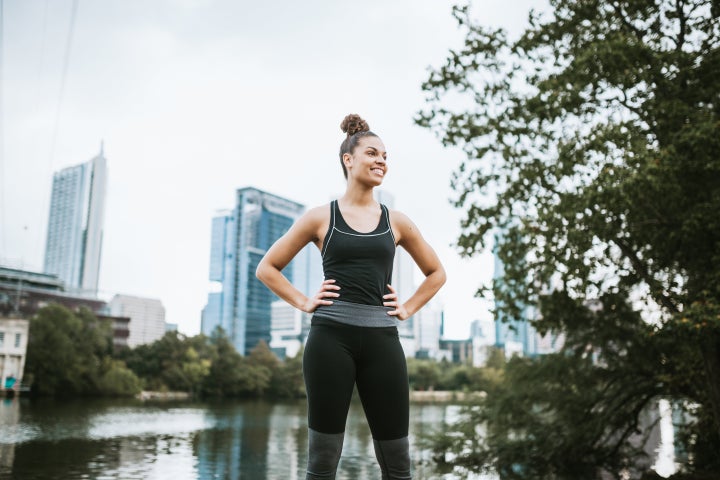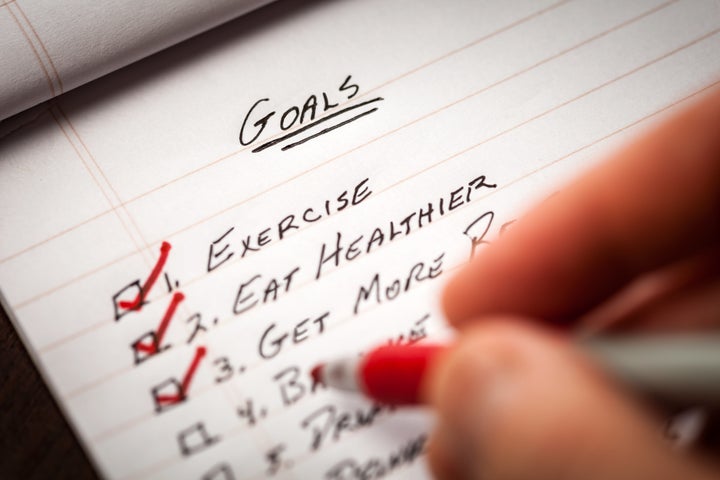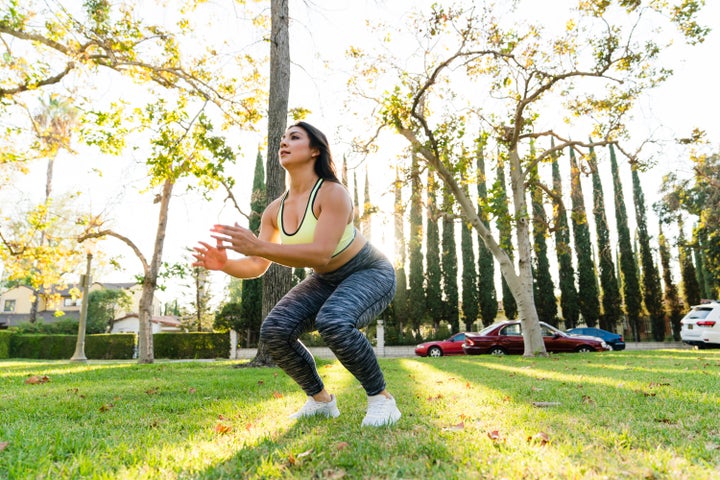
If you want to ramp up your fitness, joining a gym probably seems like the obvious solution. But while that method works for some people, it’s certainly not the only path to better health ― nor is it the most convenient, efficient or cost-effective option for everyone.
“Many people can’t afford a gym membership. Some stay-at home parents don’t have the option of leaving the house without child care, and others feel intimidated by the machine-ridden, often male-dominated gym environment,” said Amanda Dale, a certified personal trainer and sports nutritionist.
Lindsey Treadway, a certified personal trainer and owner of Burn Boot Camp in Ashburn, Virginia, added that tricky commutes and hectic schedules can also deter people from committing to a gym membership. Luckily, you don’t need to sign up for the gym to make strides in your exercise routine.
“I taught equipment-free bootcamps for eight years, and I can tell you without a doubt that the gym is not the only place to lose weight, tone up and get stronger,” Dale said.
Looking for a different method? There are plenty of options. Below are expert tips for improving your fitness ― no membership required.
1. Create a plan

First, determine which workouts grab your interest. Do you want to establish a weightlifting routine, take up jogging or play a sport? Once you know what gets you fired up, consider where and when you can exercise, whether or not you need equipment and what resources are available to you, Dale advised.
Squaring away the details will help you better set yourself up for success, whether that involves clearing a space in your living room for jump squats or devising a backup plan in case bad weather prevents you from exercising outdoors, Dale added.
2. Schedule your workouts

A consistent exercise routine is key to seeing results. Your workouts should serve as “an important and required part of your day,” like brushing your teeth or showing up to work on time, Treadway emphasized.
“Pencil your workouts into your daily calendar and visualize what you want to achieve,” she said.
3. Embrace at-home workouts

You don’t need to exercise in a spacious mirror-paneled room to score a solid workout. Five to 10 feet of clutter-free space ― enough to lunge, jump, dance or do downward dog without hitting your head on the coffee table ― should do the trick.
If you’re new to strength exercises, Dale recommended sticking with bodyweight workouts at home. “You can work on perfecting your squats, lunges, push-ups, planks and crunches without any equipment and with just a few videos on YouTube,” she said.
To keep your workouts varied and exciting, consider investing in some basic equipment, Dale said, like a resistance band, flat bench, non-slip exercise mat, jump rope or pair of dumbbells.
“If you are a bit more advanced and want to challenge yourself, you can begin to add basic weight training [exercises],” she said, including bench presses, back squats, weighted step-ups and bent-over rows and plyometrics (jumping movements) to add intensity.
4. Switch up your commute

Changing your commute can make a huge impact on your overall health, Treadway said. If you can carve out the extra time, try biking to the office a few days a week or walking 20 minutes to a different public transportation stop.
You can also seize small opportunities to be more active throughout the workday, like walking during a phone call or parking farther away from the office. Treadway’s favorite tip? Take the stairs instead of the elevator.
″[It’s] a quick way way to not only burn a few more calories, but also strengthen your bones and tone your muscles,” she explained.
5. Take advantage of outdoor workouts

The best part of exercising outside isn’t the Vitamin D — it’s the fact that there are infinite possibilities for your sweat session. You can run on a wooded trail, hike to a killer viewpoint, power-walk through the neighborhood, play beach volleyball, do yoga at a park or join a sports team, just to name a few.
Treadway underscored the fact that you don’t need a machine to help you get fit. “Go to the playground and use the monkey bars for pull-ups, or find a bench and do step-ups — better yet, find a long hill and do sprints,” she suggested.
6. Sign up for a class

Just because you don’t have a gym membership doesn’t mean you can’t participate in regular or occasional workout classes. Group classes can help keep you motivated and accountable, while also taking the stress out of structuring your own workouts, Dale said.
She recommended looking for an outdoor bootcamp, circuit program or conditioning class that includes a combination of cardio, weightlifting and core or flexibility training.
“These classes take group fitness out of the gym and into the natural environment, while still providing the supervision and professional guidance you’d get from an instructor inside the gym,” she explained.
7. Don’t neglect nutrition

Regular exercise — no matter how challenging — will only take you so far. Treadway and Dale both stressed the importance of supplementing your workouts with proper nutrition and smart eating habits. That doesn’t mean crash dieting, but actually putting thought and effort into what you’re consuming.
“Exercise is extremely important in building muscle [and] endurance, changing your shape and burning calories, but what will really make the difference you are hoping for is a healthy diet,” Treadway said.
Try to cut back on sugary, fatty and processed foods when you can, and aim to fuel yourself with balanced portions of protein, whole grains and veggies and fruits. You can also enjoy treats or foods you love in moderation. If you feel overwhelmed, Dale recommended consulting a nutritionist to help you clean up your diet and plan healthy meals.
8. Regularly re-evaluate your exercise routine

If you’re not making progress, you may need to change things up. Dale said there are four key components of a good fitness plan: frequency, duration, intensity and type.
“Focus on changing one of those things for the better this month — either exercise more days per week, exercise for a longer period of time, exercise with more intensity or add weights or try a new type of exercise each week of the month,” she said.
